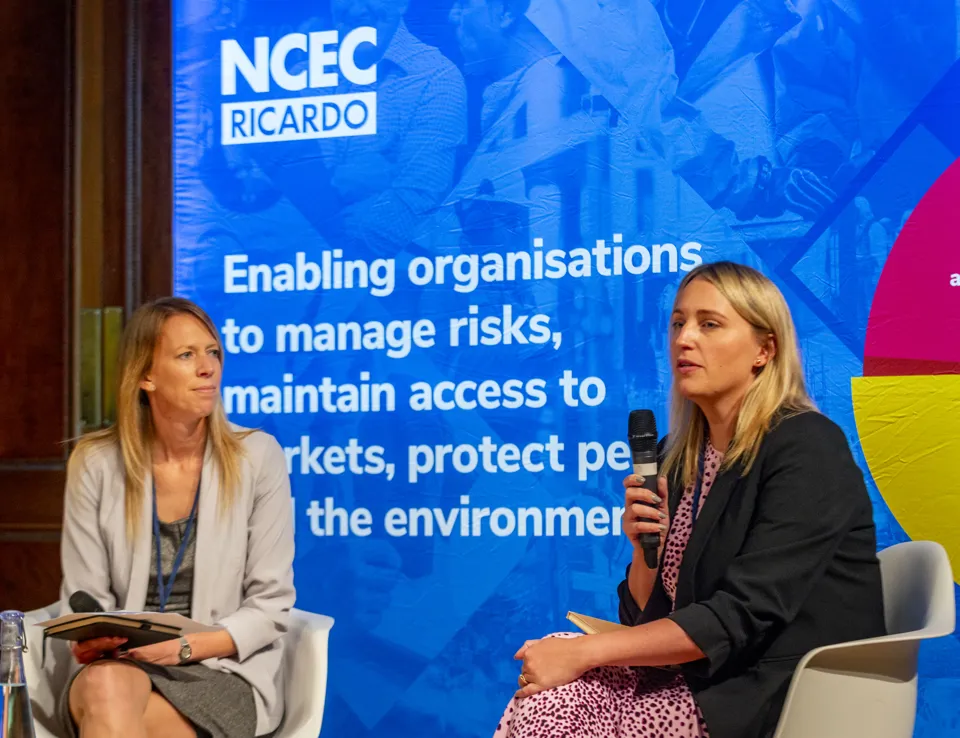Tackling Scope 3 emissions through a product-led circular economy strategy
A product-led sustainability approach can help businesses drive down value chain emissions, whilst also creating an informed understanding of where the greatest environmental impacts occur across a products life cycle. Jamie Pitcairn, Technical Director, Corporate Sustainability provides further insight.
Scope 3 typically accounts for the majority of an organisation’s greenhouse gas (GHG) emissions and sits outside of an organisation’s direct control, making it difficult to tackle. Despite this complexity, Scope 3 emissions need to be managed in order to meet the objectives of various regulations, like the Corporate Sustainability Reporting Directive (CSRD) and the Carbon Border Adjustment Mechanism (CBAM) and form an important part of the Climate Transition Plans, CDP and science-based targets.
Importantly, Scope 3 emissions need to be reduced to limit global warming. In order to manage and reduce these emissions companies need to gain a robust understanding of where they arise in their value chain. This is why methodologies like product carbon footprinting and lifecycle assessment are becoming so popular.
Having engaged with many large organisations in recent months, it is clear just how important Scope 3 emissions reduction has become at a corporate level. Pressure is mounting on how to demonstrate how emissions can be tackled, particularly as regulatory, investor and consumer expectations increase. This insight is helping to drive and enable product and operational decarbonisation measures, but also shows it is vital to clearly communicate a plan to manage and reduce Scope 3 emissions. My view is that Scope 3 decarbonisation very much resides in the ‘too difficult’ box for many companies at present but that this will need to change rapidly.
Climate change is the defining environmental crisis of our time. Its progress is fast, but we are far from powerless in the face of this global concern. However, it does require a global response and collaboration across sectors and supply chains. Scope 3 emissions are important as they represent emissions across the entire value chain. This is why the science-based target initiative (SBTi) and important legislation like the CSRD require businesses to measure and report Scope 3 emissions.
Why are Scope 3 emissions important?
Scope 3 emissions refer to all indirect upstream and downstream emissions that occur in a company’s value chain. They cover the extraction and transformation of raw materials, the manufacturing, transportation, use and end of life of products. They also cover operational costs paid by organisations, such as travel, maintenance, professional services and waste management, as well as investments in assets and businesses.
In most sectors, Scope 3 emissions typically represent over 90% of a business’ total emissions.
As companies recognise the importance of addressing their Scope 3 emissions, the use of tools and frameworks for measurement and reduction must be scaled up to facilitate the planning and ongoing tracking of the impacts of decarbonisation actions. Product carbon footprints (PCFs) and life cycle assessment (LCA) are good examples of methodologies that are being adopted by corporations to understand emissions across a product’s lifetime.
Going beyond a Scope 3 baseline
Measuring Scope 3 emissions for disclosure purposes is only part of the picture. Over the past few years many businesses have established a Scope 3 baseline in order to apply for a science-based target. To establish a baseline for supply chain emissions, i.e. upstream, a spend-based approach is most common, but it is also not a very accurate representation of emissions.
To truly manage and reduce Scope 3 emissions it is important to gain a thorough understanding of a product’s emissions across its entire life cycle using real world data (from your product PCFs and LCAs).
Accurate data will identify emission ‘hotspots’ and the next step is to develop a strategy focused on the measures and levers to reduce these emissions. Companies have long developed decarbonisation or net zero roadmaps for Scope 1 and 2 emissions – the same needs to be done for Scope 3 emissions. It is just that this is more complex, as the majority of the opportunity and insight of how products and services can be decarbonised resides with suppliers.
Scope 3 emission reduction initiatives tend to be harder, as they involve supplier engagement, product innovation, R&D and a much greater understanding of your value chain emissions. A much more involved process than switching to renewable energy or adopting LEDs. Addressing and reducing Scope 3 emissions could require a fundamental rethink of a business’ products and business model. This is why Scope 3 emissions are receiving significant interest from stakeholders and investors as they need to ensure that the businesses they invest in have a business model that will last, without the liability of selling high-carbon emitting products.
Delivering a circular economy
As companies recognise the importance of addressing their Scope 3 emissions, the use of appropriate tools and frameworks for measurement and reduction must be scaled up to identify and drive action across enormous ranges of products and materials.
A Scope 3 strategy will map out the most impactful decarbonisation actions and how they will be implemented. These will cover supplier engagement and sustainable procurement, product materials, design and recyclability, transportation and waste management. For some sectors it will capture specific issues like improving the energy efficiency of properties for rent, electrification of vehicles and long-term investment planning to move away from fossil fuel intensive business.
When prioritising actions to decarbonise certain Scope 3 categories, businesses must consider not only the scale of the emissions (the amount of carbon) but also their ability to influence the measure, stakeholder engagement and regulatory drivers.
For example, steel may be a significant source of emissions, but most businesses will not have the ability to influence how quickly the steel sector will decarbonise.
Your Scope 3 strategy must therefore balance the scale of emission reductions with prioritisation based on cost and also the ability to influence the measure.
Product-led corporate strategies
Given the importance of Scope 3 and other regulatory drivers, like the Ecodesign for Sustainable Products Regulation (ESPR), the leading companies are now developing product-led Scope 3 strategies.
These are not corporate sustainability strategies but are instead corporate strategies where the product is at the centre of the business model.
For all businesses that make and sell products, it is imperative to develop and manufacture the most sustainable products possible with a focus on circularity and eco-design, which aims to reduce the wider environmental impacts of a product throughout its life cycle. This includes extraction of raw materials to production, distribution and use until end-of-life management – all of which work to reduce the lifetime (Scope 3) emissions associated with the product.
A circular approach can drive significant Scope 3 reductions from a range of actions and interventions, including resource efficiency and waste reduction, product life extension, supply chain innovation, business model transition, and end-of-life management to mention only a few.
It is therefore of fundamental importance for manufacturers and retailers to identify where the carbon ‘hotspots’ are across a products lifecycle. This is why product carbon footprint data is key to Scope 3 decarbonisation.
Ricardo support to tackle Scope 3 emissions
- Reduction Strategy
Our Scope 3 specialists will develop a tailored plan for quantifying your full Scope 3 inventory, making best use of the data you have available, to prepare you for science-based targets and disclosure for CDP, CSRD and other voluntary and mandatory reporting. Once an initial plan is established, we develop it to improve data quality over time focusing most effort on the hotspots to enable you to robustly measure and report your Scope 3 emissions.
- Designing products for emissions reduction
Our Circular Economy team can develop eco-design principles and targets to support you to reduce your Scope 3 Emissions.
- Regulatory assessment and compliance
Our experts can keep track of the constantly evolving legislative landscape for you to enable you to become and remain compliant with relevant regulations.
- Sustainable product strategy development
We can review your product line and identify where you can improve the social and environmental performance of your products across their life cycle (such as procurement, materials and product design opportunities).
- Life Cycle Assessments (LCAs)
We can assess the environmental and social performance of your products to identify environmental impacts along the value chain and ensure evidence-led decision making and reduce the likelihood of ‘ecodesign trade-offs’.









